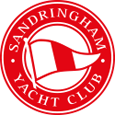FUEL and FUEL PAYMENTS
Sandringham Yacht Club is proud of its commitment to customer service and convenience. Our marine fuel service is offered Monday-Sunday during Clubhouse trading hours, offering diesel and unleaded fuel on demand.
Open to members and the general public, fuel is purchased via a credit card or EFTPOS card, adjacent to the fuel bowser.
For current fuel prices, please call the clubhouse on 03 9599 0999.
FUEL INSTRUCTIONS
Before refuelling
- Ensure that engine bays have adequate ventilation.
- Ensure that you have the correct fire-fighting equipment on board, that it is in good working order, that it is easily accessible and that you know how to use it.
- Make yourself aware of other fire-fighting equipment that is close at hand at the service station or marina.
- Make sure you know where the nearest spill kit is located and consider carrying a small kit with you.
- Turn off all potential sources of flame such as pilot lights, gas refrigerators, electrical equipment and mobile phones.
- Remove all passengers from the boat.
- Close all hatches and doors.
During refuelling
- Ensure that no-one is on-board the vessel when refuelling at a wharf or jetty.
- If using a petrol engine, ensure it is properly grounded to prevent the build up of static electricity.
- Ensure the hose nozzle is in the tank before starting the dispenser.
- Operate the fuel dispenser by hand only – do not lock or jam the dispenser in the open position.
- Don’t overfill the tank: fuel expands in high temperatures and may overflow.
- Maintain contact between the hose nozzle and the filler neck to avoid static sparks.
- Ensure the dispenser is off before removing the hose nozzle from the tank.
After refuelling
- If fuel has spilled into the bilges, manually pump the bilges out into a container or an onshore tank and vent the bilges to the stage where there has been a complete change of air.
- Only start the engine when you are satisfied that the boat is free of fumes.
- Only allow passengers to board the vessel after you have started the engine and allowed it to run for an adequate time.
Portable tanks
- Portable fuel tanks should be filled on the ground away from the boat.
- If using portable petrol tanks to supplement on-board fuel tanks, they should be kept in a position where they can be ejected quickly from the boat. Always use fuel lines to transfer fuel from portable tanks to inboard tanks or direct to the engine, in preference to pouring fuel through a funnel or spout.

